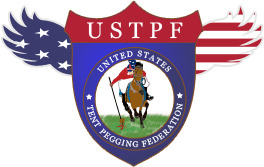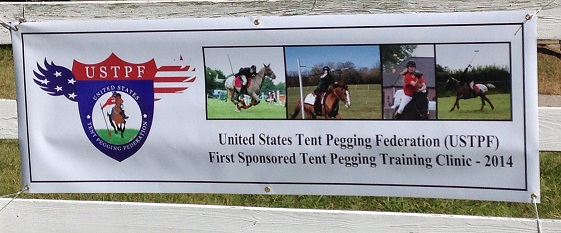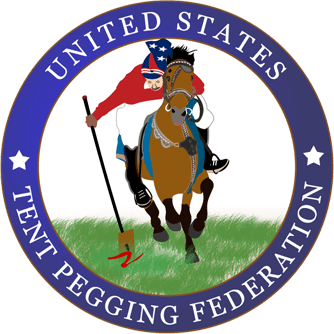HISTORY OF TENT PEGGING & STANDARDS
BACKGROUND
No one exactly knows about the roots of “Tent Pegging” that from where they rose. However, a myth is that this technique at Arms was initially employed by the Macedonian conqueror; Alexander the Great when his armies couldn’t defeat the Raja Porus of Purushottama, which was the ancient King of Paurava. The main reason behind the unsuccessfulness of Alexander’s armies was because the Raja’s army was not only equipped with the Arms of that ancient times but the army also had the elephants trained to attack the enemy armies.
Tent Pegging or Neza Bazi is an ancient sport and a myth is that this sport roots go all the way to Alexander the Great’s time. Another myth is that this sport is older than the Alexander’s time. This sport was originally a cavalry technique to destroy sleeping enemy before the dawn. This cavalry technique was performed with two different arms (Lance & Sword). Tent Pegging or Neza Bazi is well recognized sport in many countries in the world. Until this time Tent Pegging or Neza Bazi is just considered manly as an equestrian sport and performed by man in Pakistan and India. However, in other parts of the world like Australia, Germany, Norway, South Africa, UK and USA women are also involved in this excellent sport.

There have not been many innovations introduced to tent pegging in the past two centuries other than when the ITPF was farmed in November 2013, standards for Tent Pegging were introduced and recognized by all the member countries. As it is known that tent pegging was employed as a cavalry technique in the past by the armies worldwide until the new inventions took place for cavalry units of the armies and replaced the horse with armored vehicles (Tanks in the past two centuries). This ancient cavalry technique specifically adopted by the British Armies as a sport to keep their soldiers active during the English Rule on the Indian Sub-Continent.
Currently, two age groups are recognized for this sport in specific that include under 19 year age group and regular age group which involves all the age group riders (under 19, seniors from age 20 to age 40 and masters from 40 and above for men and age 35 and above for women). For many other equestrian sports youth groups are segregated because of the psychological reasons that include building their confidence and love for the sport. The age segregation is necessary for the promotion of this sport especially in the West that includes Europe, USA and Canada.
CURRENT SUGGESTED SIZE STANDARDS FOR LANCE & SWORD
Length Standards for Lance Worldwide:

As we are aware that most countries practice Tent Pegging with International Tent Pegging Federation (ITPF) recognized standard Lance Minimum 2.2 meters (7 ft. 2 in.) – Maximum 2.75 meters (9 ft.) long. In India and Pakistan where tent pegging is known as Neza Bazi, the length standards for lance are different, some people use shorter lance in length of Minimum 1.88 meters (6 ft-2 in.), which is shorter than the minimum ITPF standard Lance and or all the way up to Maximum 3.66 meters (12 ft) long lance, which is way above the maximum length standards recognized by the ITPF.
The United States Tent Pegging Federation – (USTPF) have developed the National Standard for Lance and Swords for Riders for the following: Riders will Demonstrate their equipment here (Lance or Sword), when the rider take a start of his/ her run. Once the rider(s) completes his/ her first five (5) meters, He/ she will show their Lance or Sword and then complete their run for Peg, or Ring, Ring and Peg or Lemon, Lemon and Peg.
Length Standards for Sword:

Currently the ITPF length standards for the sword are (Minimum 81 cm. (2 ft. 8 in.) – Maximum 90 cm. (2 ft. 11.5 in.) in blade length, with an overall length, not exceeding 110 cm. Blades on hilt, slings or barbs are not allowed), which are the same as the 1908 English Cavalry Saber, which is 7″ long at the hilt and the blade length is 35″.
TENT PEGGING AND HORSE BREEDS
Tent Pegging can be performed on any horse or any breed as long as a horse is trained to gallop in a straight line and perform fearlessly around the spectators, with rider in the saddle, Lance & Sword. Horse’s height is very significant when performing the Tent Pegging (Skill At Arm) specifically with sword. The best height of a horse for sword event is 14HH – 14.2HH maximum.

Sword is a handled very carefully during the Tent Pegging events because a small mistake can cause injury to the rider or his horse. Therefore, it is significant to use a shorter horse and as mentioned in the above paragraph that a horse with shorter height is mandatory to perform the sword event.
Only two horse breeds are considered fit in the United States of America in the height category; number one horse that is considered best is Arabian followed by Quarter horse. Both breeds are known for speed for short distance but only one breed can beat the Quarter horse for endurance is an Arabian horse breed. Arabian horse can perform for four to six hours with short breaks or no breaks without any problem, where other horses can lose the interest in the sport. In Pakistan, local breed known as Desi breed is well recognized.
Pakistani riders love to have a local Desi Breed horse for Tent Pegging because they can really perform like a hot blooded horse such as Arabians. In India, two breeds known as Marwari and Kathiawari; are well recognized breeds. Indian riders love these two breeds for Tent Pegging because of their slim body, height and pointy ears touching and provide an arch like shape when attentive to their work. In Europe mix breeds are used for Tent Pegging, which include Thoroughbred, Arabians or warm blooded horses. African and Australian riders use available horse breeds for Tent Pegging, riders in Middle East also used diverse horse breeds, including Arabian, Thoroughbred, or available horse breeds. In South Africa, it is evidenced that American Quarter Horse breed along with other available horse breeds are used as discussed above.

Tent Pegging is as an equestrian sport. Tent pegging is also called Skill AT Arm. Three different events are performed during a Tent Pegging competition. Two different type of Arms or equipment are used when performing Tent Pegging. Number one event is called pegging, which is performed using Lance with length of minimum 7′ and 3″ to maximum 9′ and 3″ long. This event is a straight run on a galloping horse with lance in riders hand from the start line to the end line 109 yards (100 meters). The rider runs the horse from starting line all the way up to 76 yards (70 meters) where the peg (target) is set in the ground, pierces the peg and carry it to 32 yards (30 meters), which is the end line distance of full 109 yards (100 meters) start to end.
Number two event is called mix of three targets; in this event the start to end distance is the same as the number one event. The riders runs the horse on a galloping speed by passing the Lance through two Rings hanging on two stands 16 yards (15 meters) apart, which is also called Gallows for Tent Pegging and the third target is buried at 32 yards (30meters) little less than 51/4” inches (13 cms) in the ground and 63/4” (17cms) above the ground.
Number three event is performed using Sword which consists of 7″ inches long hilt and 35″ long blade and total length of the sword is 42″ Inches long; in this event the start to end distance is the same as the number one and number two events. The rider slices two lemons or oranges hanging on a two stands placed apart on the same distances mentioned above for number two event, which is called Gallows for Tent Pegging followed by piercing a target on the ground called Peg as discussed above.
AGE GROUPS
As discussed above that under 19 age group is recognized by the ITPF but it is not segregated from the event. Under 19 age group is provided the platform to compete in the events during special events such as when one country’s under 19 age group visits the other country competes specifically with the under 19 age group. It was observed in 2014 World Cup competitions in Oman that few countries’ teams performed with mix of riders with under the 19 age and all the way up to masters’ age group riders.
SUGGESTED AGE GROUPS INNOVATIONS
- Age Group “Youth” (8 – 14):
Suggestion is presented that a group should be established and recognized from the age 8 – age 14. This specific age group will identified as “Youth Group” and only train and compete along with the same age riders. They should not be permitted to participate in the other age groups at all. This restriction will help the youth group to learn, develop skills for the sport and build confidence in the same environment including developing a personality for learning and employing the skill sets within the same age groups. This age group will be provided a separate competition for their age group and recognized accordingly.
- Age Group under 20 (15 – 19):
Suggestion is presented allowing the group to be established and recognized from the age 15 – age 19. This specific age group will identified as “Under 20” and only train and compete along with the same age riders. They should not be permitted to participate in the other age groups at all. This restriction will help the under 20 group to learn, develop skills for the sport and build confidence in the same environment including developing a personality for learning and employing the skill sets within the same age groups. This age group will be provided a separate competition for their age group and recognized accordingly.
- Seniors for Men (20 – 40):
The age group 20 – 40 for men is identified as seniors and recognized accordingly. This age group doesn’t require any innovation.
- Seniors for Women (20 – 35):
The age group 20 – 35 for women is identified as seniors and recognized accordingly. This age group doesn’t require any innovation.
- Masters for Men (40 – Above):
The age group 41 – above for men is identified as “Masters” and recognized accordingly. This age group does require innovation. In the “Masters” age group competitions the youth and senior riders should be prohibited and events should be conducted as separate competitions identified and recognized as Men’s “Masters Competitions”.
- Masters for Women (35 – Above):
The age group 35 – above for women is identified as “Masters” and recognized accordingly. This age group does require innovation. In the “Masters” age group competitions the youth and senior riders should be prohibited and events should be conducted as separate competitions identified and recognized as Women’s “Masters Competitions”.
CURRENT PROBLEMS FOR INNOVATIVE INTRODUCTIONS
Currently there is only one team competes with mix of different age groups in the international championship events. Therefore, none of the country or team has faced any problems because a Tent Pegging Team is based on 4 riders. A major problem will rise due to allowing and recognizing six separate age groups and that will include number of riders will increase and number of horses will required if all the age groups compete in the same competition. At present there are 28 countries member of the ITPF.
Suppose if all the 28 countries participate in the international championship will create a serious problem for the host country to arrange that many horses, boarding and lodging, safety and security of the guest teams, transportation and accommodation of the teams in the field. At present time there is no country has capabilities and facilities to host and conduct such a great event for accommodating full 28 member countries. Most events in the past two years were conducted by three countries until 2014 that included Sudan, Pakistan, Oman and India. They only invited minimum five gust countries and maximum nine guest countries. Oman, Pakistan and India were observed to host maximum fifteen countries for international events.
PROBLEMS OF SPECIFIC AGE GROUP EVENTS
Another major problem at current stage for Tent Pegging is to conduct specific age group events separately during the same international competition. As discussed above that it can be a significant problem conducting one major competition with specific age group riders. Suppose if fifteen countries are participating in an international competitions with six teams from each country will cause a huge stress and management problem for the host country. Each participating country out of fifteen participants will bring 24 riders and at least two officials per age group (a manager and a coach for each team) total of 36 members from each country.
This will be a major burden for the host country to provide place to stay, food for three times, safety & security and horses including tack and equipment due to the traveling restrictions from American or European countries. In order to provide equal opportunity for the participants to compete successful in the event the host country may not be able to handle and accommodate all the participating teams at once. A major issue may arise when transporting all the participating teams every day from hotel to the field and back to the hotel. Therefore, it is more appropriate to divide the world in to five regions.
SOLUTIONS TO INNOVATIVE INTRODUCTIONS AND IMPLIMENTATIONS
Solutions are possible to deal with the problem when the innovations are introduced and implement. Since, Tent Pegging is emerging sport throughout the world. Therefore, it is highly recommended that world should be divided into five major regions. The five major regions include, African Region, Asian Region, European Region, Australian Region and American Region.
African Region:
African region can cover, all the North and South Africa that includes Egypt, Sudan, South Africa and rest of the African countries.
Asian Region:
Asian region can cover Afghanistan, India, Iran, Middle Eastern countries, Pakistan, and Russian Peninsula.
European Region:
European region can cover all the Europe and major countries in Europe includes Germany, Netherlands, Norway, Sweden, Finland and UK (European Region is established and recognized by the ITPF).
Australian Region:
Australian region can cover all the islands in the region that includes Australia, New Zealand, and Fiji Islands etc.
American Region:
American region can cover Canada and USA in the North America and rest of the countries in the South America. (American Regional Tent Pegging Federation – ARTPF is esablished and recognised by the ITPF in 2019. USA and Canada are the current members of the American Region).
BENEFITS OF REGIONAL SETUP
Benefits of regional setup can’t be ignored. In a regional setup will help to manage the competitions and events in a reasonable manner without putting extreme burden on the host country. All the initial events can be conducted to select favorite teams reducing the number down to two or three teams maximum from each region. As discussed above that Oman, Pakistan and India have hosted maximum fifteen countries competitions in the past. In 2014 the USA has entered the sport and demonstrated extreme potential for the promotion of this fine sport “Tent Pegging” in the American Region including has the potential to host such a big event in future. The United States Tent Pegging Federation, Inc. (USTPF) farmed in December 2013 a month after the formation of the International Tent Pegging Federation (ITPF).
The regional setup will be significantly useful for managing and conducting international level events. Each region can host their regional events according to their scheduled program and let compete the regional country member teams and select the favorite teams. During the regional competitions select the maximum three favorite teams in specific age group who can compete in the World Cup competitions of their own.
CONCLUSIONS
Tent Pegging is getting popular worldwide. Therefore, stands and innovations are significantly necessary to emerge the sport in different nations. Many countries have age related ordinances and mandatory by the equestrian federation of those specific country and good example is the USA. In order to promote Tent Pegging in the USA, the USTPF is highly motivated to introduce innovations and ready to implement for the regional establishment.
BY DR. ASIM SHAHZAD MALIK D.B.A.











